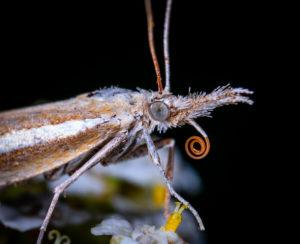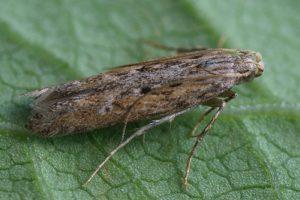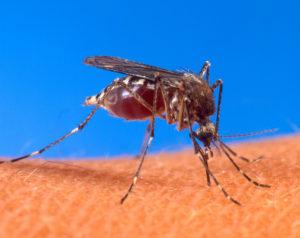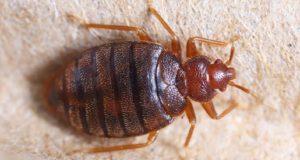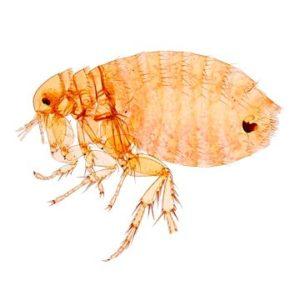Does the moth that lives in the house bite or not
Content
Indoor moth is common throughout the world and is a pest of food and things made from natural materials. These house parasites are a large group, which includes several thousand species. Between themselves, they are divided into two groups according to food preference or habitat.

Butterfly moth.
Appearance
The moth looks like a nondescript butterfly and belongs to the order Lepidoptera of the class of insects of the family of real moths. The species differ slightly from each other, due to the shades of the wings.
The proboscis is an organ that is absent as unnecessary
Most butterflies feed using their proboscis. This type of mouthpart allows insects to access flower nectar, which is preferred by most butterfly species.
However, there are exceptions among them - vampire butterflies. Their proboscis is able to pierce the skin of an animal or a person. An adult moth does not have a proboscis, since it does not feed, but only mates and produces offspring. For this, it has enough nutrients accumulated in the state of the caterpillar.
Moth caterpillar and its mouthparts
Larvae, regardless of species, have a dark brown head and a light body. They are major pests as they damage clothes and furniture or destroy food supplies. Caterpillars have powerful chewing mouthparts that allow them to eat hard grains and semi-synthetic things.
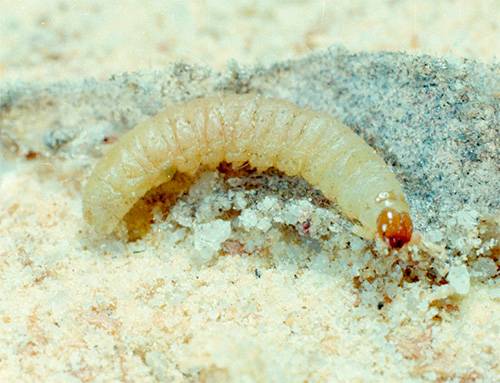
a moth caterpillar can even bite through cellophane.
What does the parasite eat
Almost anything can be affected by moths. Common types include:
- wardrobe - eats fur coats and other clothes made from animal hair;
- furniture - eats natural upholstery;
- grain - starts in the kitchen and hits cereals;
- cabbage - appears in the spring and lays eggs on cabbage, rapeseed, horseradish and other cruciferous, which are then eaten by their offspring.
Can a moth bite a person
The moth and its larva do not have a developed organ with which they could bite through human skin, but they do other harm. Food stocks damaged by moths are unfit for consumption. After their use in a person, intoxication of the body or an allergic reaction is possible.
The answer to the question of whether a moth bites is no.
Who bites
Man is inextricably linked with nature, and insects are part of it. Some of them have perfectly adapted to living quarters and choose our homes as their habitat. At home, up to 15 species of harmful insects can coexist with a person. Some of them are dangerous to humans, such as blood-sucking parasites.
female mosquito
Mosquitoes are a common type of insect that feed on human blood. Female mosquitoes fly into the premises and attack at night. You can determine their presence by a characteristic squeak, as well as marks on the body that remain after the bite.
Mosquitoes choose places where the capillaries are closest to the skin and can provoke allergic reactions to their saliva. In some cases, mosquitoes are carriers of dangerous diseases.
Bed bugs
Linen or bed bugs are parasites that lead a secretive lifestyle and attack a person most often when he is sleeping. Hence the name of these insects.
They often settle on the back of the mattress, where they hide during the day, however, almost any secluded place is suitable for a permanent habitat - ventilation shafts, old boxes, cracks in the walls. Unlike a mosquito, a single bed bug can bite repeatedly, leaving a puncture line on the skin.
This type of parasite can also carry pathogens, but cases of infection from bedbugs are rare. However, the proximity to bedbugs brings a lot of discomfort to people, and the room infected by them acquires a specific smell.
Common fleas
Most often, fleas are transmitted to humans through contact with an infected animal. They continue to parasitize on humans, biting them regardless of the time of day. They are dangerous because they are carriers of a spectrum of pathologies:
- viral;
- infectious;
- parasitic.
Conclusion
Most blood-sucking parasites are difficult to detect with the naked eye, while moths readily fly into light, but unlike the former, they cannot bite.
However, both types of parasites must be disposed of, since bloodsuckers can be carriers of various diseases, and moths damage food supplies and favorite things made from natural materials, and can also provoke allergies.
